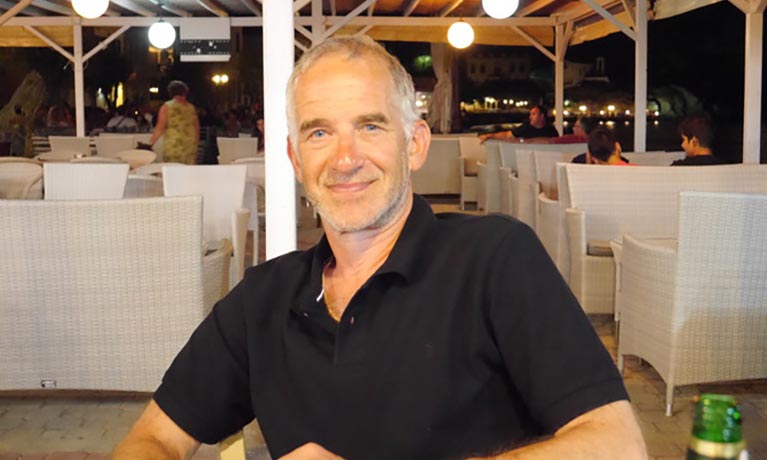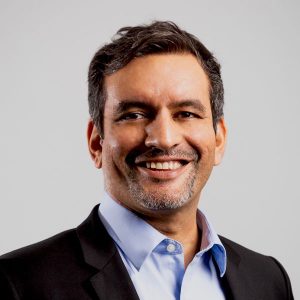Professor Noorani performs minimally invasive keyhole surgery to push back Henri’s need for shoulder replacement surgery
Henri’s shoulder problems started early in his twenties, when it used to dislocate regularly. Around the age of 27 he had a Putti-Platt procedure, one of the surgical treatment options for shoulder instability.

The overall experience and follow-up were excellent, including the provision of videos of the procedure which made it far more involving and interesting!
TAGGED INProfessor Ali Noorani
Shoulder & elbow sports injury and trauma
Shoulder instability / dislocations
Comprehensive arthroscopic management (CAM)
Shoulder decompression surgery
Ongoing shoulder problems for many years lead Henri to seek an expert at the forefront of their practice to preserve his shoulder joint.
Whilst Henri could continue with his activities as normal, there was a restriction to his range of movement and he learned to compensate, most often subconsciously, so that he was able to do everything he wanted to a reasonable level.
Around eight years ago however, he experienced stiffness and pain in his shoulder when waking up in the morning. Then more recently, about five years ago, he began to experience continuous dull pain that he managed with paracetamol. From about three years ago, he started to have both pain and an increasing hindrance to moving his shoulder under certain conditions, e.g. serving in tennis.
He explains: “I searched for a stem-cell /shoulder specialist and came across Professor Noorani on Google. By coincidence I had been actively recommended to see him two years previously by a fellow tennis player, but at that time was happy to wait until the shoulder was sufficiently bad for shoulder replacement surgery as had been proposed by another consultant I had seen.”
Henri continues: “Following a thorough assessment of my shoulder using historical information and new scans, Professor Noorani proposed a course of action that might push back the need for shoulder replacement surgery for at least a decade. This differed from more interventionist advice I had received previously. This was done quickly, clearly and efficiently and a date for surgery was set. Professor Noorani was incredibly informative and clear about what he was planning and what the outcomes might be, which greatly assisted in making the decision to operate sooner rather than later.”
Professor Noorani carried out a number of procedures in one operation using keyhole surgery to improve and restore the position of Henri’s shoulder and to improve the odds of him having a better functioning shoulder in the long term. This included comprehensive arthroscopic management (CAM), a minimally invasive surgical procedure that is predominantly used for younger patients, often athletes, who have advanced arthritis of the shoulder but who are too young for shoulder joint replacement surgery. The technique is designed to preserve the joint and delay the need for joint replacement. It alleviates pain along the back and side of the shoulder.
He also carried out a SLAP repair, to fix the torn labrum, and a shoulder subacromial decompression to treat Henri’s shoulder impingement, a common condition that causes weakness in your shoulder and pain when you raise your arm above your head.
Six months after the operation, Henri gives an update: “My expectations are that it will take 12 – 18 months for my shoulder to return to full strength and maximal utility, with a lot of physical work (stretching & weights) along the way. My shoulder feels fine now; strength is 70% of target, and range of movement is improved in some areas, although perhaps not as good as I had hoped in others. I’m still unable to do stuff that I could do before, but that should change. The dull pain has gone, and my optimism / personal prognosis is greatly uplifted from before.”
Henri has this advice to other patients with similar shoulder problems: “Deal with any underlying pain, etc as early as possible to try and avoid getting to the state that my shoulder was in. That said, few people know the optimal time when to see a surgeon, so my suggestion would be to see the best surgeon you can find – at the forefront of their practice – and do whatever you have to do to avoid a shoulder replacement.”
He summarises his experience with Professor Noorani: “The overall experience and follow-up were excellent, including the provision of videos of the procedure which made it far more involving and interesting! His manner and sense of the practicalities has made me feel we are working together to solve this problem, which in turn has motivated me more to do the necessary post-op workouts which have helped the recovery. In my view, I have been in the best possible hands and am extremely optimistic about the outcome.”
Professor Noorani concludes: “Whilst it is still early days in terms of Henri’s recovery, I am pleased he is making good progress. The procedures we carried out will strengthen his shoulder and give a greater range of movement, and as importantly, avoid the requirement for a shoulder replacement for some time.”

Looking to speak to our team? Call us on 020 7046 8000 020 7046 8085
To book an appointment
or refer a patient
